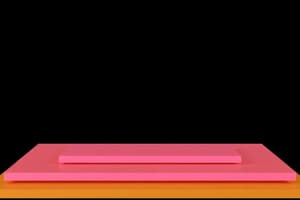Podcast
Questions and Answers
What is the main purpose of the layered structure in operating systems?
What is the main purpose of the layered structure in operating systems?
The layered structure in operating systems aims to organize the components into distinct layers, with each layer providing specific services to the layers above it.
What is the key advantage of the client-server (microkernel) model in operating systems?
What is the key advantage of the client-server (microkernel) model in operating systems?
The client-server (microkernel) model in operating systems provides better security, flexibility, and scalability by separating the kernel from the user-level services.
What are the main benefits of using virtual machines?
What are the main benefits of using virtual machines?
The main benefits of using virtual machines include improved resource utilization, isolation and security, portability, and ease of management and maintenance.
What is the Java Virtual Machine (JVM), and what is its primary role?
What is the Java Virtual Machine (JVM), and what is its primary role?
How does the virtual machine concept differ from the traditional operating system approach?
How does the virtual machine concept differ from the traditional operating system approach?
Flashcards are hidden until you start studying
Study Notes
Operating System Structures
- A layered system requires a clear definition of layers and careful planning of layer placement, with an example being the THE operating system.
- The THE system is divided into six layers, as shown in the figure.
Virtual Machines
- A virtual machine is an illusion of a real machine, created by a real machine's operating system, making a single real machine appear as multiple real machines.
- The architecture of a virtual machine allows each user to choose a different operating system, and multiple operating systems can run simultaneously.
- An example of a virtual machine architecture is the IBM 370 computer.
- JVM (Java Virtual Machine) consists of a class loader, class verifier, and runtime interpreter.
Advantages and Disadvantages of Virtual Machines
- Virtual machines provide complete protection of system resources, as each virtual machine is isolated from all other virtual machines.
- This isolation allows for no direct sharing of resources.
- Virtual machines are suitable for operating-systems research and development, as system development can be done on the virtual machine without disrupting normal system operation.
- A disadvantage of virtual machines is that they are difficult to implement, requiring an exact duplicate of the underlying machine.
Client-Server Structure (Microkernel)
- The client-server structure consists of two classes of processes: servers and clients, which communicate via message passing.
- Clients and servers can run on different computers connected by a LAN/WAN.
- Servers run in user mode, ensuring that the system remains operational even if a server crashes.
- This structure is well-suited for distributed systems, such as Windows NT.
Microkernel
- The microkernel concept divides operating system tasks into several processes, each implementing a single set of services (e.g., I/O servers, memory servers, process servers, and threads interface systems).
- Each server runs in user mode, providing services to requested clients through message passing.
- The microkernel structure is useful for operating system research and development.
Operating System Structures
- Operating systems can be broadly classified into five categories based on their structuring mechanism:
- Monolithic System
- Layered System
- Virtual Machine
- Exo-kernels
- Client-Server Model (Microkernel)
- Monolithic operating systems control all aspects of operation, with components organized haphazardly and any module able to call any other module without restriction.
Studying That Suits You
Use AI to generate personalized quizzes and flashcards to suit your learning preferences.




